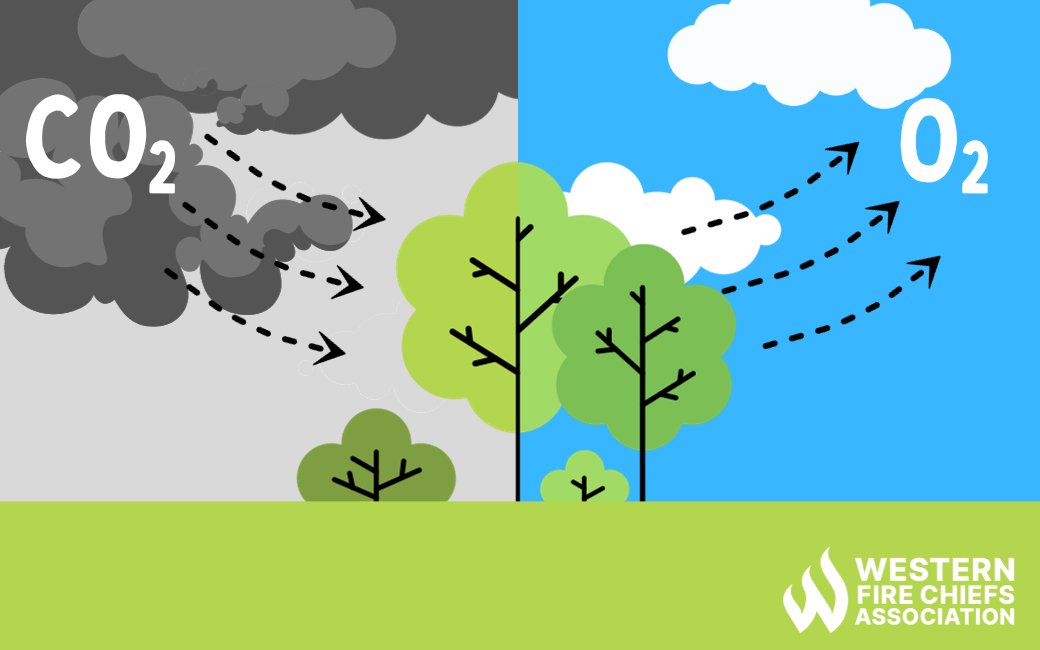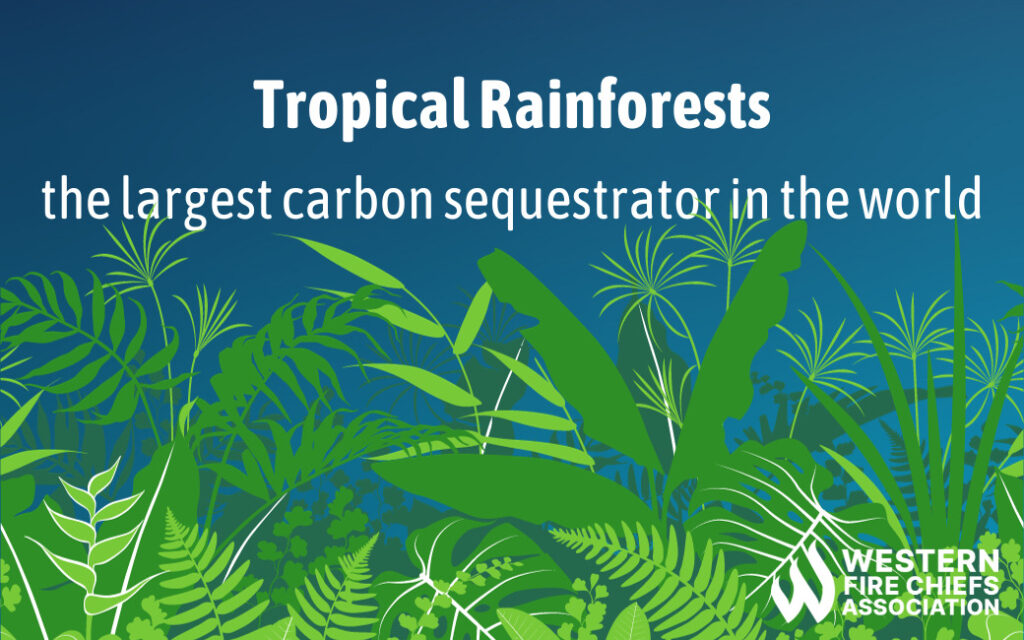Fire Pit Safety Tips
Stay safe around the campfire with tips from the Western Fire Chiefs Association. Learn essential precautions and practices for a worry-free outdoor campfire.
Discover the link between trees, carbon sequestration, and wildfire resilience. Explore how nature's balance can mitigate fire risks with guidance from the WFCA.
Published:October 3, 2023
Edited:March 1, 2024

Discover the link between trees, carbon sequestration, and wildfire resilience. Explore how nature’s balance can mitigate fire risks with guidance from the WFCA.
Wildfire smoke not only impacts individuals’ health, but it also plays a huge role in climate change. The release of greenhouse gases, such as carbon dioxide, into the atmosphere heats the planet. During photosynthesis, carbon sequestration takes place to reduce the amount of carbon in the air.
When wildfires occur, minuscule particles and gases are released into the air through the smoke that is produced. These particles can negatively impact individuals with health conditions and can be the result of asthma attacks, heart attacks, and strokes.2 In extreme smoke conditions, when the Air Quality Index (AQI) reaches 150, breathing in this smoke is comparable to smoking seven cigarettes in a single day.1 Additionally, wildfires release carbon dioxide (CO2) emissions and other greenhouse gases into the atmosphere. CO2 traps heat into the atmosphere resulting in an increase to climate change.3 Carbon sequestration is the process that combats this issue by encapsulating and storing the atmospheric CO2, mitigating climate change.4
Trees play a significant role in reducing the amount of CO2 that is in the atmosphere through the process of carbon sequestration. During photosynthesis, as trees grow, CO2 from the air is absorbed and oxygen (O2) is released. The absorbed CO2 is stored in the accumulated tissue of the trees. As leaves of the tree fall to the forest grounds, the carbon is absorbed into the soil and roots of the tree. The larger and healthier a tree grows, the more carbon it is able to store.5
When a wildfire burns, it releases the stored carbon from burned trees back into the atmosphere, the amount of which increases with fire severity. These wildfires can also damage the forest resulting in the loss of ability to sequester carbon in the future.6 However, research suggests that large forest fires do not cause living trees to release significant amounts of carbon.7 Some studies have shown that certain tree species, such as jack pines, giant sequoias, and eucalyptus trees, are adapted to withstand fire and can even benefit from it.8 These species have evolved to regenerate and grow after fire events, contributing to ongoing carbon sequestration.

Tropical rainforests allow for more carbon sequestration than any other forest or human-engineered carbon sequestration technologies9. This is due to the consistent sunlight and lush vegetation that thrives in rainforests. Tropical rainforests are considered to be carbon sinks due to its ability to absorb more carbon than it emits.Tropical rainforests stores billions of tons of carbon every year while taking up only 6% of the land on Earth, a number that has dwindled from 14%.10
Stay safe around the campfire with tips from the Western Fire Chiefs Association. Learn essential precautions and practices for a worry-free outdoor campfire.
Discover essential firework safety tips to ensure a dazzling display without accidents. Learn how to celebrate responsibly with expert guidance from WFCA.
Explore the role of AI in wildfire prediction with guidance from the WFCA. Learn how advanced algorithms and data analytics enhance early detection and response.